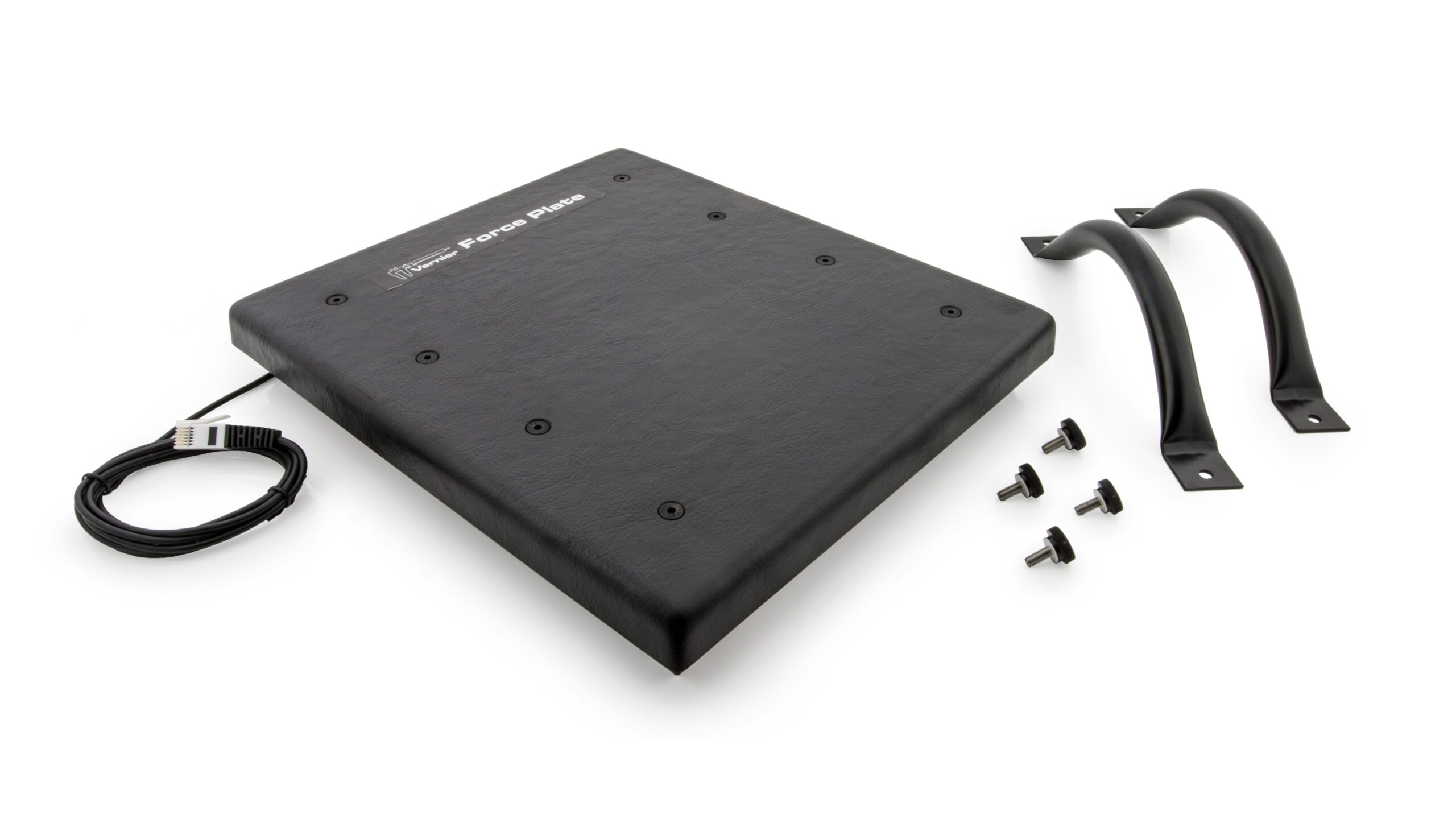Force Plate (FP-BTA )

Which force plate do I have?
The original Force Plate (shown here) was revised in November 2023.
Original Force Plate Specifications and User Guide

Troubleshooting
- Primary Test: Set the range switch, located on the same side of the force plate as the cable, to the 3500 N range. Reset the data-collection program by starting a new experiment file to access the appropriate calibration equation for the range setting. Does the plate read approximately zero? Choose Zero in software. Stand on the plate; using F=mg, does the reading make sense?
- Secondary Test: Changing the physical orientation of the sensor will change the reading when no force is applied. Use the tools in the data-collection program to zero the sensor.
Note: It is common for the force plate to exhibit some hysteresis (on the order of a few newtons) after hard impacts.
Original Force Plate
The most common failure mode of the original version is to have the plate not respond to changes in the force. This may be seen as a constant -1000N or +4000N reading when on the 3500 N range. If the force plate does not respond at all to a change in force, check that the range switch is moved all the way to the side on the 3500 N range, and not in the middle. If plate still does not respond, see the article linked below to determine if your original version force plate can still be repaired. Can my Original Force Plate (pre-November 2023) be repaired?
Additional Troubleshooting
- What activities are available for the Force Plate?
- My Force Plate (order code FP-BTA) reading does not change.
- Can I use your equipment for a bridge-building contest?
- How short an impulse can I measure with the Force Plate?
- What does the Force Plate measure?
- The force plate handle does not line up with the mounting holes in the force plate.
- My Force Plate does not read correctly and it sounds like something is rattling inside.
- Which force plate do I have?
- Can I use a Go! Link interface to connect my Force Plate?
- Can you use a Force Plate with a Texas Instruments calculator?
DIY REPAIR INSTRUCTIONS
- How do I replace the load cells in a Force Plate (order code FP-BTA)?
- How do I replace the cable on an original style Force Plate?
- Can my Original Force Plate (pre-November 2023) be repaired?
- Why doesn't my pre-November 2023 Force Plate read "0"?
Specifications
- Force range (positive value is a compression force)
⚬ –350 to +3500 N
⚬ –85 to +850 N - Maximum non-damaging force: 4500 N (1000 lb) compression
- Dimensions: 31.5 cm x 31.5 cm x 3.5 cm
- Default Calibrations
⚬ 3500 N Range
▸Slope (gain): 850 N/V
▸Intercept (offset): –550 N
⚬ 850 N Range
▸Slope (gain): 207 N/V
▸Intercept (offset): –135 N
ORIGINAL FORCE PLATE SPECIFICATIONS
- Force range (positive value is a compression force)
⚬ –850 to +3500 N
⚬ –200 to +850 N - Maximum non-damaging force: 4500 N (1000 lb) compression
- Dimensions: 28 cm x 32 cm x 5 cm
- Default Calibrations
⚬ 3500 N Range
▸Slope (gain): 1000 N/V
▸Intercept (offset): –1000 N
⚬ 850 N Range
▸Slope (gain): 250 N/V
▸Intercept (offset): –250 N
Calibration
Calibrate? No. The sensor is set to the stored calibration before shipping. If you wish to calibrate the sensor, you will conduct a two-point calibration. For more information, see How do I calibrate my sensor?
- First Point
⚬ Set the Force Plate on a level surface and remove all force.
⚬ Enter 0 (zero) as the first known force.
- Second Point
⚬ Apply a known force (known mass) to the Force Plate. Use a known mass that is at least…
▸875 N for the 3500 N range
▸215 N for the 850 N range
⚬ Enter the weight (note: 1 kg weighs 9.8 N).
⚬ Do not to exceed the selected range setting during the calibration.
Related Products
- Lateral Force Accessory (
2D-FP ) - Ladder Experiment Kit (
2DFP-LA ) - 2-Axis Force Plate (
FP2D-BTA ) - Go Direct® 2-Axis Force Plate (
GDX-FP2D ) - Go Direct® Force Plate (
GDX-FP )
Replacement Parts
- Force Plate Handles (
FP-HAN ) - BTA to BTA Long Cable (
BTA-LONG )
(revised Force Plate only)
